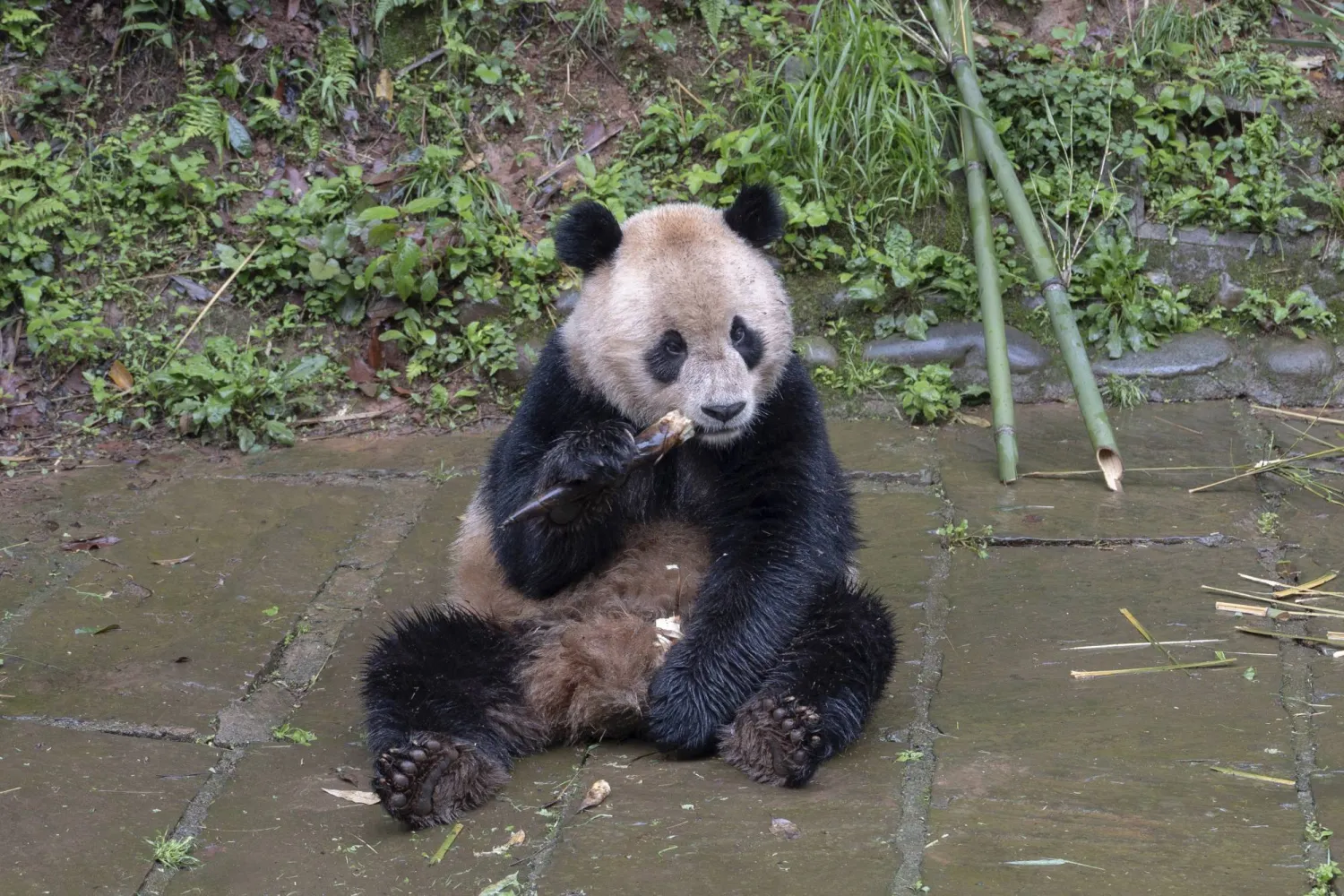Two giant pandas from China have safely arrived in Southern California, where they will be cared for as part of an ongoing conservation partnership, the San Diego Zoo Wildlife Alliance said Friday.
The pandas, Yun Chuan and Xin Bao, will spend the next several weeks acclimating to their new home in a private habitat at the San Diego Zoo and will not be viewable by the public, the alliance said in a brief statement.
“They are being monitored closely by expert wildlife health and care teams who will determine when the pair are ready to meet the public,” The Associated Press quoted the alliance as saying.
A farewell ceremony was held earlier this week before the pandas departed from China.
Yun Chuan, a mild-mannered male who’s nearly 5 years old, has connections to California, the wildlife alliance said previously. His mother, Zhen Zhen, was born at the San Diego Zoo in 2007 to parents Bai Yun and Gao Gao.
Xin Bao is a nearly 4-year-old female described as “a gentle and witty introvert with a sweet round face and big ears.”
The San Diego Zoo Wildlife Alliance has a nearly 30-year partnership with leading conservation institutions in China focused on protecting and recovering giant pandas and the bamboo forests they depend on.
Pair of Giant Pandas from China Arrive Safely at San Diego Zoo

In this photo released by Xinhua News Agencym, giant panda Yun Chuan eats at the Bifengxia Panda Base of the China Conservation and Research Center for the Giant Panda in Yanan, southwest China's Sichuan Province on April 18, 2024. (Xue Chen/Xinhua via AP)

Pair of Giant Pandas from China Arrive Safely at San Diego Zoo

In this photo released by Xinhua News Agencym, giant panda Yun Chuan eats at the Bifengxia Panda Base of the China Conservation and Research Center for the Giant Panda in Yanan, southwest China's Sichuan Province on April 18, 2024. (Xue Chen/Xinhua via AP)
لم تشترك بعد
انشئ حساباً خاصاً بك لتحصل على أخبار مخصصة لك ولتتمتع بخاصية حفظ المقالات وتتلقى نشراتنا البريدية المتنوعة





